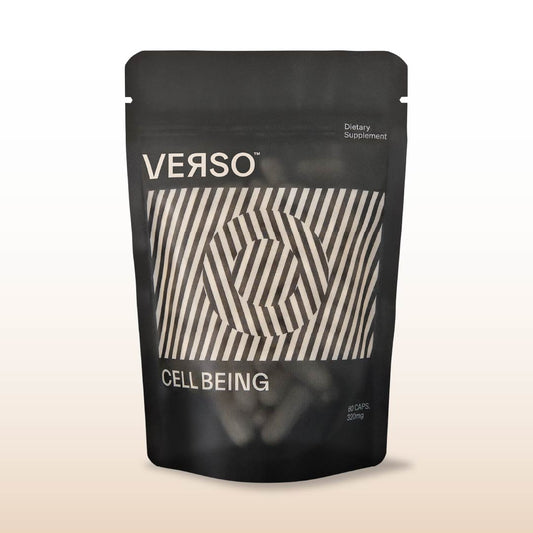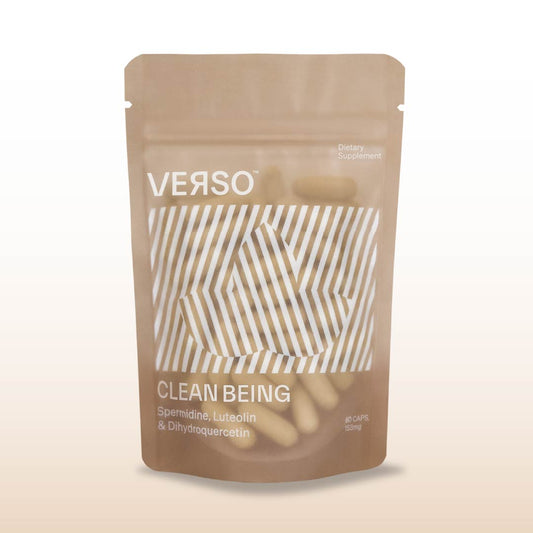The promising benefits of calorie restriction on longevity and lifespan have popularized the idea of using interventions to mimic these effects.
Calorie Restriction Mimetics (CRM’s): Mimic the Benefits of Calorie Restriction Without Fasting
CALORIE RESTRICTION MIMETICS AND AGING
As we age, the function of our body gradually declines leading to chronic disease and eventually, to death. Though aging is a natural part of life, certain lifestyle factors can contribute to enhanced longevity, such as diet and lifestyle. Calorie restriction has been studied in relation to longevity and lifespan since the 1930’s(32). Calorie restriction(CR) refers to restricting calories in the diet (usually by 10-40%), while still maintaining adequate nutritional value. Across studies of various organism models from yeast to primates, CR has been shown to enhance longevity by reducing inflammation and the development of the following chronic diseases: cancer, cardiovascular disease, neurodegeneration, obesity and type 2 diabetes. Additionally, in animal models from yeast to mice, excluding primates, CR was able to extend lifespan. Although there have been CR studies in humans which show that moderate CR is most likely beneficial, more studies are needed to make a substantial conclusion(23, 30).
WHAT IS A CALORIE RESTRICTION MIMETIC(CRM)?
Due to the promising benefits of CR on longevity and lifespan, the idea of using a tool to mimic these effects while avoiding having to restrict calories, including lifestyle tools or pharmacological drugs, has gained attention. The goal of calorie restriction mimetics (CRM’s) is to mimic the following benefits of CR: metabolic, stress response, hormonal, physiological/functional, and longevity-related(reduction of age-related disease), all while not significantly reducing food intake(8, 28). This means that CRM’s work with the same pathways and mechanisms that CR does–one of these defining CR mechanisms is the activation of autophagy, or cellular clean-up, combined with cellular protein deacetylation. Cellular protein deacetylation induces autophagy(6).
WHAT ARE SOME POTENTIAL CRM’S?
There are several organic compounds which have shown promise in modulating CR pathways. Examples of the most well-researched CRM’s are aspirin, glucosamine, hydroxycitrate, metformin, NAD+ precursors, rapamycin, resveratrol, and spermidine(28). Most of this research is pre-clinical and uses animal models. Below is a discussion of the common mechanisms of CRM’s, as well as a brief overview of the following potential CRM’s: resveratrol, metformin, rapamycin, NMN, and spermidine.
WHAT ARE THE MECHANISMS OF CRM’s?
CR works by producing moderate biological stress resulting in modulated energy, stress resistance and nutrient-sensing pathways. This involves the following aging pathways: “adenosine-monophosphate-activated protein kinase (AMPK), mechanistic target of rapamycin (mTOR), nuclear factor erythroid 2-related factor 2 (Nrf2), sirtuin-1 (SIRT-1), foxhead box O (FOXO), and peroxisome proliferator-activated receptor gamma coactivator-1 alpha (PGC-1α)” (18-19, 27, 30, 49). AMPK plays a role in energy homeostasis and is activated in low-energy environments. During CR, AMPK inhibits mTOR–when mTOR is inhibited, autophagy is promoted. Nrf2 protects against oxidative damage. Activation of sirtuins and FOXO, cellular proteins/genes, is linked to enhanced longevity in animal models(17). These pathways have been researched in respect to their roles in improving organ function and cellular strength through autophagy, mitochondrial biogenesis, repairing DNA damage, and combating oxidative stress(47). A focus for CRM’s is the deacetylation of proteins and autophagy, which eliminates damaged cellular parts(organelles, proteins, etc) to prevent cellular aging and dysfunction. Improper activation of autophagy is implicated in aging, and age-related disease development(17, 28). Additionally, autophagy induced during nutrient deprivation has been shown to extend longevity in animal models(12).
WHAT IS RESVERATROL?
Resveratrol is a plant phytonutrient found in red wine and the skin of grapes. Across different animal studies, resveratrol has been shown to promote longevity. Research has shown that across mammalian models resveratrol ameliorates certain aspects of conditions of age-related disease, including metabolic disorders, type 2 diabetes, cancer, neurocognitive disorders and CVD (44). In primates fed a high-fat, high-sugar diet, resveratrol ameliorated inflammation, increased SIRT1 activation, improved insulin sensitivity in adipose tissue, and improved CVD risk markers(29, 44). Resveratrol has been shown to extend lifespan of yeast, bees, worms, fish and flies(21). However, lifespan of mice is only significantly extended by resveratrol if the mouse is fed a high-fat diet (HFD). Resveratrol also induces a ‘CR-like transcriptional signature’ in mice similar to that in humans(39). In some clinical trials, resveratrol has shown beneficial effects on cancer, diabetes, obesity, neurological disease, inflammatory diseases and CVD, while in others no effects were shown(8,48) Resveratrol-induced health effects are dependent on targeting AMPK and SIRT1(24, 42, 44). The impact of resveratrol on both the AMPK/PCG1 pathway and SIRT1 results in autophagy(33-4).
WHAT IS METFORMIN?
Metformin is a common drug used to treat type 2 diabetes. It is derived from guanidines in French lilac(16). Studies have shown that metformin can extend lifespan in worms and certain mice models, however, it does not extend life in flies(16 ). In a CVD and obese mouse model, metformin use mimics the metabolic impacts of CR, and stimulates autophagy(37). In diabetic humans as well as those with CVD, epidemiological studies show long-term use of metformin to be linked with increased all-cause mortality survival(4,13). Research has also suggested that amongst those that use metformin, age-related disease incidence is decreased, including incidence for: cancer, CVD, chronic kidney disease; these benefits are also observed in animal models with CR(1,3,15,41). This research suggests metformin’s potential as a CRM. Due to metformin’s geroprotective results, several clinical trials are on their way including the Targeting Aging with Metformin (TAME) clinical trial(35). Metformin use has been associated with activation of AMPK, inhibition of mTOR, inhibition of HDACs(anti-cancer effects), and stimulation of SIRT1 (9,36).
WHAT IS SPERMIDINE?
Spermidine is a polyamine, which is naturally created in the body by microbiota and through cellular synthesis. Although spermidine can also be found in foods, such as soybeans, nuts, or wheat germ(46). Across animal models, spermidine supplementation has been shown to increase lifespan, enhance immune function, to protect heart, muscle and brain health, as well as to suppress tumor growth(11,28). In nonagenarians(90-99 y.o) and centenarians, an increase in levels of whole-level spermidine is linked to longevity(43). Human epidemiology studies have shown that those who eat more dietary polyamines experience less CVD and cancer-related death(11). In animal models, spermidine induces autophagy(12, 33, 34). Spermidine prevents protein acetylation, inhibits mTOR, activates AMPK, and promotes autophagy in the mitochondria(mitophagy) (11,12,40).
WHAT IS RAPAMYCIN?
Rapamycin is an antifungal, antibiotic compound that is made by the bacteria, Streptomyces hygroscopicus. Rapamycin is also an FDA-approved immunosuppressant. Rapamycin has extended lifespan in flies, nematodes and mice(10). In mice, rapamycin also produced cardioprotective, metabolic protective, and neuroprotective effects (5). Unfortunately, when prolonged, in diabetic mice, rapamycin treatments exacerbate diabetes and insulin dysregulation, as well as reduces lifespan(25, 45). In conjunction with being an immunosuppressant, this diminishes potential clinical use for rapamycin. Rapamycin inhibits mTOR, and promotes autophagy Additionally, rapamycin is also possibly involved in protein deacetylation(26).
WHAT ARE NAD+ PRECURSORS?
Nicotinamide adenine dinucleotide, NAD+ is a coenzyme crucial for metabolism, cellular energy, and DNA repair. Precursors to NAD+ include but are not limited to, nicotinamide mononucleotide (NMN) and nicotinamide riboside (NR). Both NR and NMN can be found in a variety of foods, including vegetables, shrimp, human milk, meat and fruit. As we age, NAD+ concentrations decrease (7). Supplementation with NR and NMN have been shown to exert some anti-aging effects (7). In mouse models, NMN and NR have been shown to have cardioprotective and liver protective effects. They have also been shown to protect vascular health, and in AD(Alzheimer’s) models, to improve different facets of cognition including both learning and memory(7, 44). In models of muscular dystrophy, they have also been shown to improve muscle function(44). Additionally, in mouse models they have been shown to improve diabetic parameters(50). NAD+ is essential for SIRT1 mediated protein deacetylation, which upregulates autophagy(14). NAD+ also causes clean up of the mitochondria and might activate AMPK(14).
WHAT DOES THIS ALL MEAN?
For nearly a century, calorie restriction has been studied as an longevity-enhancing lifespan-promoting intervention across animal models. Further research is needed to elucidate the longevity-related effects of long-term CR. CR is harsh and even if benefits could be crossed over to humans, few would want to participate in such an intervention. Thus, the idea of identifying lifestyle interventions or pharmacological compounds, CRM’s, that produce similar effects to CR has caught the eye of researchers. Despite the complexity of pathways involved in the benefits of CR, several CRM’s have been proposed—many such as resveratrol, metformin, spermidine, rapamycin and NAD+ precursors have shown promise in exerting several CR-like anti-aging benefits.
Click here to read all about Resveratrol
Click here to read all about NMN
Click here to read all about NAD+
Click here to read all about sirtuins
Click here to read all about mTOR
Click here to read all about AMPK


Author: Jacqueline Seymour
Jacki is a Master’s student at USC, home of Dr. Valter Longo’s Longevity Institute, where she’s studying her passion for life: Gerontology(the science of aging) and Nutrition.
References
1. Ben Sahra et al. Metformin in cancer therapy: a new perspective for an old antidiabetic drug? Mol Cancer Ther. 2010 May;9(5):1092-9. doi: 10.1158/1535-7163.MCT-09-1186. Epub 2010 May 4. PMID: 20442309.
2. Biochimica et Biophysica Acta (BBA) – Molecular Basis of Disease, Volume 1852, Issue 6, 2015, Pages 1209-1218, ISSN 0925-4439, DOI: 10.1016/j.bbadis.2015.01.012.
3. Boussageon et al. Reappraisal of metformin efficacy in the treatment of type 2 diabetes: a meta-analysis of randomised controlled trials. PLoS Med. 2012;9(4):e1001204. doi: 10.1371/journal.pmed.1001204. Epub 2012 Apr 10. PMID: 22509138; PMCID: PMC3323508.
4. Campbell J et al. Metformin reduces all-cause mortality and diseases of ageing independent of its effect on diabetes control: A systematic review and meta-analysis, Ageing Research Reviews, Volume 40, 2017,Pages 31-44, ISSN 1568-1637, https://doi.org/10.1016/j.arr.2017.08.003.
5. Chiao YA, Kolwicz SC, Basisty N, et al. Rapamycin transiently induces mitochondrial remodeling to reprogram energy metabolism in old hearts. Aging (Albany NY). 2016;8(2):314-327. doi:10.18632/aging.100881
6. Chung KW, Chung HY. The Effects of Calorie Restriction on Autophagy: Role on Aging Intervention. Nutrients. 2019 Dec 2;11(12):2923. doi: 10.3390/nu11122923. PMID: 31810345; PMCID: PMC6950580.
7.Das A et al. Impairment of an Endothelial NAD+-H2S Signaling Network Is a Reversible Cause of Vascular Aging. Cell. 2018 Mar 22;173(1):74-89.e20. doi: 10.1016/j.cell.2018.02.008. Erratum in: Cell. 2019 Feb 7;176(4):944-945. PMID: 29570999; PMCID: PMC5884172.
8.Donald K. Ingram, George S. Roth, Calorie restriction mimetics: Can you have your cake and eat it, too? Ageing Research Reviews, Volume 20, 2015, Pages 46-62, ISSN 1568-1637
9.Duca FA, et al. Metformin activates a duodenal Ampk-dependent pathway to lower hepatic glucose production in rats. Nat Med. 2015 May;21(5):506-11. doi: 10.1038/nm.3787. Epub 2015 Apr 6. Erratum in: Nat Med. 2016 Feb;22(2):217. PMID: 25849133; PMCID: PMC6104807.
10.Ehninger D, Neff F, Xie K. Longevity, aging and rapamycin. Cell Mol Life Sci. 2014;71(22):4325-4346. doi:10.1007/s00018-014-1677-1
11.Eisenberg T et al. Cardioprotection and lifespan extension by the natural polyamine spermidine. Nat Med. 2016 Dec;22(12):1428-1438. doi: 10.1038/nm.4222. Epub 2016 Nov 14. PMID: 27841876; PMCID: PMC5806691.
12.Eisenberg, T., Knauer, H., Schauer, A. et al. Induction of autophagy by spermidine promotes longevity. Nat Cell Biol 11, 1305–1314 (2009). DOI:10.1038/ncb1975
13.Eurich DT, Majumdar SR, McAlister FA, Tsuyuki RT, Johnson JA. Improved clinical outcomes associated with metformin in patients with diabetes and heart failure. Diabetes Care. 2005 Oct;28(10):2345-51. doi: 10.2337/diacare.28.10.2345. PMID: 16186261.
14.Fang EF, Lautrup S, Hou Y, et al. NAD+ in Aging: Molecular Mechanisms and Translational Implications. Trends Mol Med. 2017;23(10):899-916. doi:10.1016/j.molmed.2017.08.001
15.Giovannucci E, et al. Diabetes and cancer: a consensus report. CA Cancer J Clin. 2010 Jul-Aug;60(4):207-21. doi: 10.3322/caac.20078. Epub 2010 Jun 16. PMID: 20554718.
16.Glossmann HH, Lutz OMD. Metformin and Aging: A Review. Gerontology. 2019;65(6):581-590. doi: 10.1159/000502257. Epub 2019 Sep 13. PMID: 31522175.
17.Guarente L. Calorie restriction and sirtuins revisited. Genes Dev. 2013;27(19):2072-2085. doi:10.1101/gad.227439.113
18.J. Lee, D.G. Jo, D. Park, H.Y. Chung, M.P. Mattson. Adaptive cellular stress pathways as therapeutic targets of dietary phytochemicals: focus on the nervous system. Pharmacol. Rev., 66 (3) (2014), pp. 815-868
19.J. Martel, D.M. Ojcius, Y.F. Ko, P.Y. Ke, C.Y. Wu, H.H. Peng, J.D. Young. Hormetic effects of phytochemicals on health and longevity. Trends Endocrinol. Metab., 30 (6) (2019), pp. 335-346
20.J.A. Mattison et al.Caloric restriction improves health and survival of rhesus monkeys. N. Engl. J. Med., 381 (26) (2019), pp. 2541-2551
21.Khushwant S. Bhullar, Basil P. Hubbard, Lifespan and healthspan extension by resveratrol. Nat. Commun., 8 (2017), p. 14063
22.Kolosova NG, Vitovtov AO, Muraleva NA, Akulov AE, Stefanova NA, Blagosklonny MV. Rapamycin suppresses brain aging in senescence-accelerated OXYS rats. Aging (Albany NY). 2013 Jun;5(6):474-84. doi: 10.18632/aging.100573. PMID: 23817674; PMCID: PMC3824413.
23.L. Fontana, L. Partridge Promoting health and longevity through diet: from model organisms to humans Cell, 161 (1) (2015), pp. 106-118
24.Lagouge et al. Resveratrol improves mitochondrial function and protects against metabolic disease by activating SIRT1 and PGC-1alpha. Cell. 2006;127:1109–1122.
25.Lamming DW, Ye L, Katajisto P, et al. Rapamycin-induced insulin resistance is mediated by mTORC2 loss and uncoupled from longevity. Science. 2012;335(6076):1638-1643. doi:10.1126/science.1215135
26.Lamming DW. Inhibition of the Mechanistic Target of Rapamycin (mTOR)-Rapamycin and Beyond. Cold Spring Harb Perspect Med. 2016;6(5):a025924. Published 2016 May 2. doi:10.1101/cshperspect.a025924
27.M.P. Mattson. Hormesis and disease resistance: activation of cellular stress response pathways. Hum. Exp. Toxicol., 27 (2) (2008), pp. 155-162
28.Madeo F, Carmona-Gutierrez D, Hofer SJ, Kroemer G. Caloric Restriction Mimetics against Age-Associated Disease: Targets, Mechanisms, and Therapeutic Potential. Cell Metab. 2019 Mar 5;29(3):592-610. doi: 10.1016/j.cmet.2019.01.018. PMID: 30840912.
29. Mattison JA et al. Resveratrol prevents high fat/sucrose diet-induced central arterial wall inflammation and stiffening in nonhuman primates. Cell Metab. 2014 Jul 1;20(1):183-90. doi: 10.1016/j.cmet.2014.04.018. Epub 2014 May 29. PMID: 24882067; PMCID: PMC4254394.
30. R. de Cabo, M.P. Mattson. Effects of intermittent fasting on health, aging, and disease. DOI: 10.1016/j.arr.2014.11.005.
31. L. Fontana, L. Partridge, V.D. Longo. Extending healthy life span—from yeast to humans Science, 328 (5976) (2010), pp. 321-326
32. McDonald RB, Ramsey JJ. Honoring Clive McCay and 75 years of calorie restriction research. J Nutr. 2010;140(7):1205-1210. doi:10.3945/jn.110.122804
33. Morselli et al. Caloric restriction and resveratrol promote longevity through the Sirtuin-1-dependent induction of autophagy. Cell Death Dis. 2010;1(1):e10. doi: 10.1038/cddis.2009.8. PMID: 21364612; PMCID: PMC3032517.
34. Morselli et al. Spermidine and resveratrol induce autophagy by distinct pathways converging on the acetylproteome. J Cell Biol. 2011 Feb 21;192(4):615-29. doi: 10.1083/jcb.201008167. PMID: 21339330; PMCID: PMC3044119.
35. N. Barzilai et al. Metformin as a tool to target aging. Cell Metab., 23 (6) (2016), pp. 1060-1065
36. Owen MR, Doran E, Halestrap AP. Evidence that metformin exerts its anti-diabetic effects through inhibition of complex 1 of the mitochondrial respiratory chain. Biochem J. 2000 Jun 15;348 Pt 3(Pt 3):607-14. PMID: 10839993; PMCID: PMC1221104.
37. Onken B, Driscoll M. Metformin induces a dietary restriction-like state and the oxidative stress response to extend C. elegans Healthspan via AMPK, LKB1, and SKN-1. PLoS One. 2010 Jan 18;5(1):e8758. doi: 10.1371/journal.pone.0008758. PMID: 20090912; PMCID: PMC2807458.
38. Papanas, N. & Maltezos, Efstratios. (2009). Metformin: A review of its use in the treatment type 2 diabetes. Clin Med Ther. 1. 1367-1381. 10.4137/CMT.S1085.
39. Pearson KJ et al. Resveratrol delays age-related deterioration and mimics transcriptional aspects of dietary restriction without extending life span. Cell Metab. 2008;8:157–168.
40. Pietrocola F et al.. Spermidine induces autophagy by inhibiting the acetyltransferase EP300. Cell Death Differ. 2015 Mar;22(3):509-16. doi: 10.1038/cdd.2014.215. Epub 2014 Dec 19. PMID: 25526088; PMCID: PMC4326581.
41. Pilmore, Helen. (2010). Review: Metformin: Potential benefits and use in chronic kidney disease. Nephrology (Carlton, Vic.). 15. 412-8. 10.1111/j.1440-1797.2010.01328.x.
42. Price et al.. SIRT1 is required for AMPK activation and the beneficial effects of resveratrol on mitochondrial function. Cell Metab. 2012 May 2;15(5):675-90. doi: 10.1016/j.cmet.2012.04.003. PMID: 22560220; PMCID: PMC3545644.
43. Pucciarelli, S. et al. “Spermidine and spermine are enriched in whole blood of nona/centenarians.” Rejuvenation research 15 6 (2012): 590-5 .
44. Rajman L, Chwalek K, Sinclair DA. Therapeutic Potential of NAD-Boosting Molecules: The In Vivo Evidence. Cell Metab. 2018;27(3):529-547. doi:10.1016/j.cmet.2018.02.011
45. Sataranatarajan K et al. Rapamycin Increases Mortality in db/db Mice, a Mouse Model of Type 2 Diabetes. J Gerontol A Biol Sci Med Sci. 2016 Jul;71(7):850-7. doi: 10.1093/gerona/glv170. Epub 2015 Oct 5. PMID: 26442901; PMCID: PMC4906320.
46. Soda K, Dobashi Y, Kano Y, Tsujinaka S, Konishi F. Polyamine-rich food decreases age-associated pathology and mortality in aged mice. Exp Gerontol. 2009 Nov;44(11):727-32. doi: 10.1016/j.exger.2009.08.013. Epub 2009 Sep 6. PMID: 19735716.
47. T.B.L. Kirkwood. Understanding the odd science of aging. Cell, 120 (4) (2005), pp. 437-447. DOI: 10.1016/j.cell.2005.01.027
48. Timmers et al. Calorie restriction-like effects of 30 days of resveratrol supplementation on energy metabolism and metabolic profile in obese humans. Cell Metab. 2011 Nov 2;14(5):612-22. doi: 10.1016/j.cmet.2011.10.002. PMID: 22055504; PMCID: PMC3880862.
49. V. Calabrese, C. Cornelius, A.T. Dinkova-Kostova, I. Iavicoli, R. Di Paola, A. Koverech, S. Cuzzocrea, E. Rizzarelli, E.J. Calabrese Cellular stress responses, hormetic phytochemicals and vitagenes in aging and longevityBiochim. Biophys. Acta, 1822 (5) (2012), pp. 753-783
50. Yoshino J, Mills KF, Yoon MJ, Imai S. Nicotinamide mononucleotide, a key NAD(+) intermediate, treats the pathophysiology of diet- and age-induced diabetes in mice. Cell Metab. 2011 Oct 5;14(4):528-36. doi: 10.1016/j.cmet.2011.08.014. PMID: 21982712; PMCID: PMC3204926.





